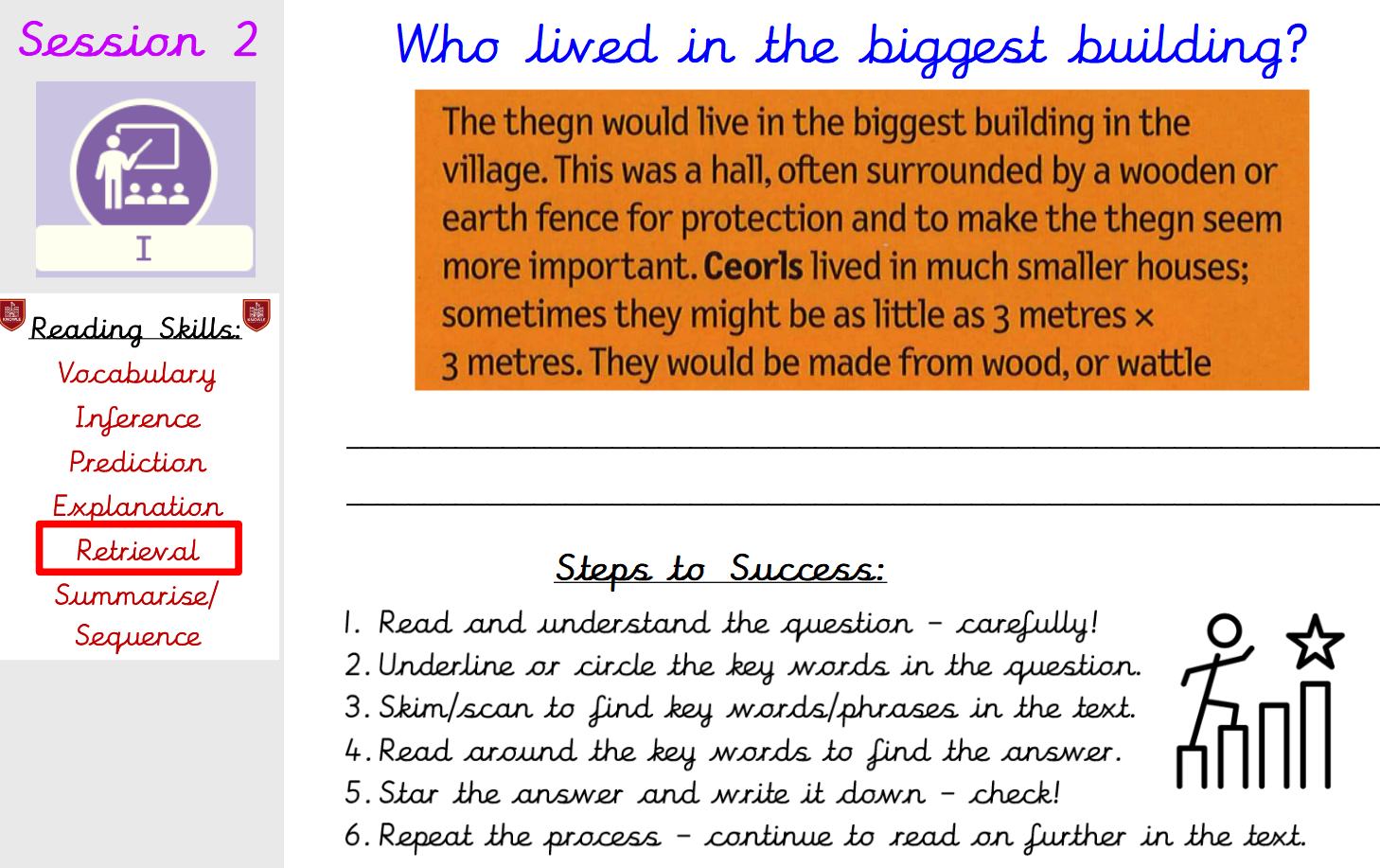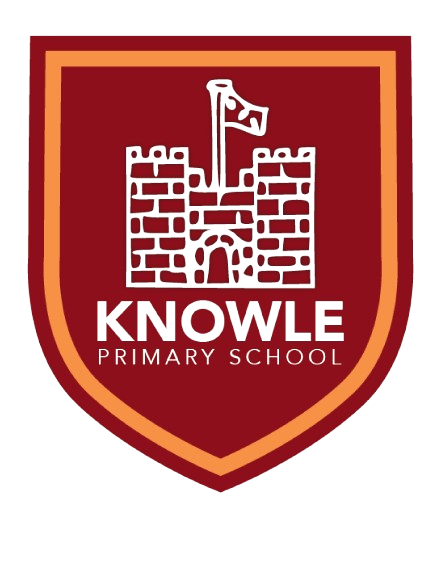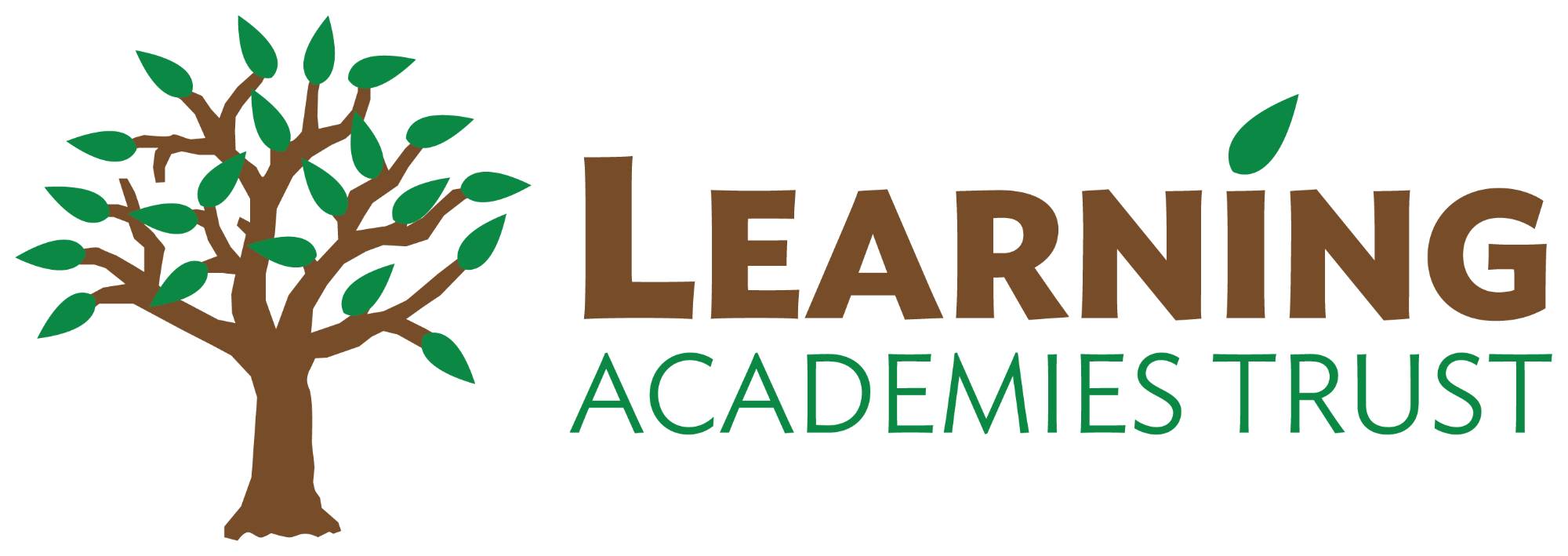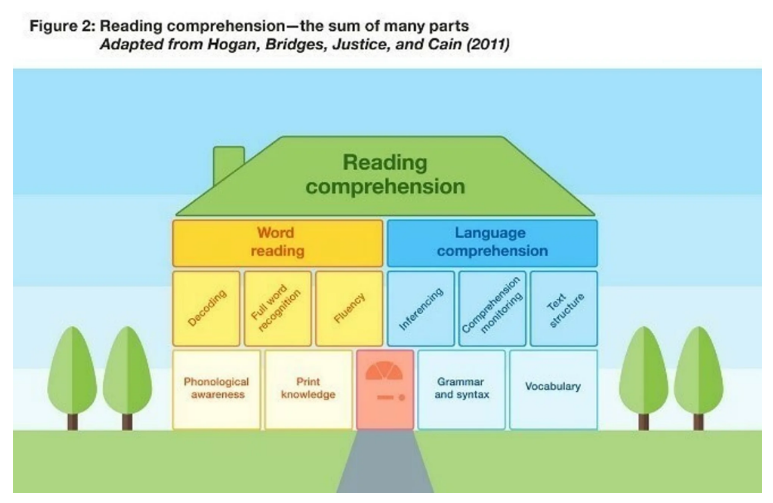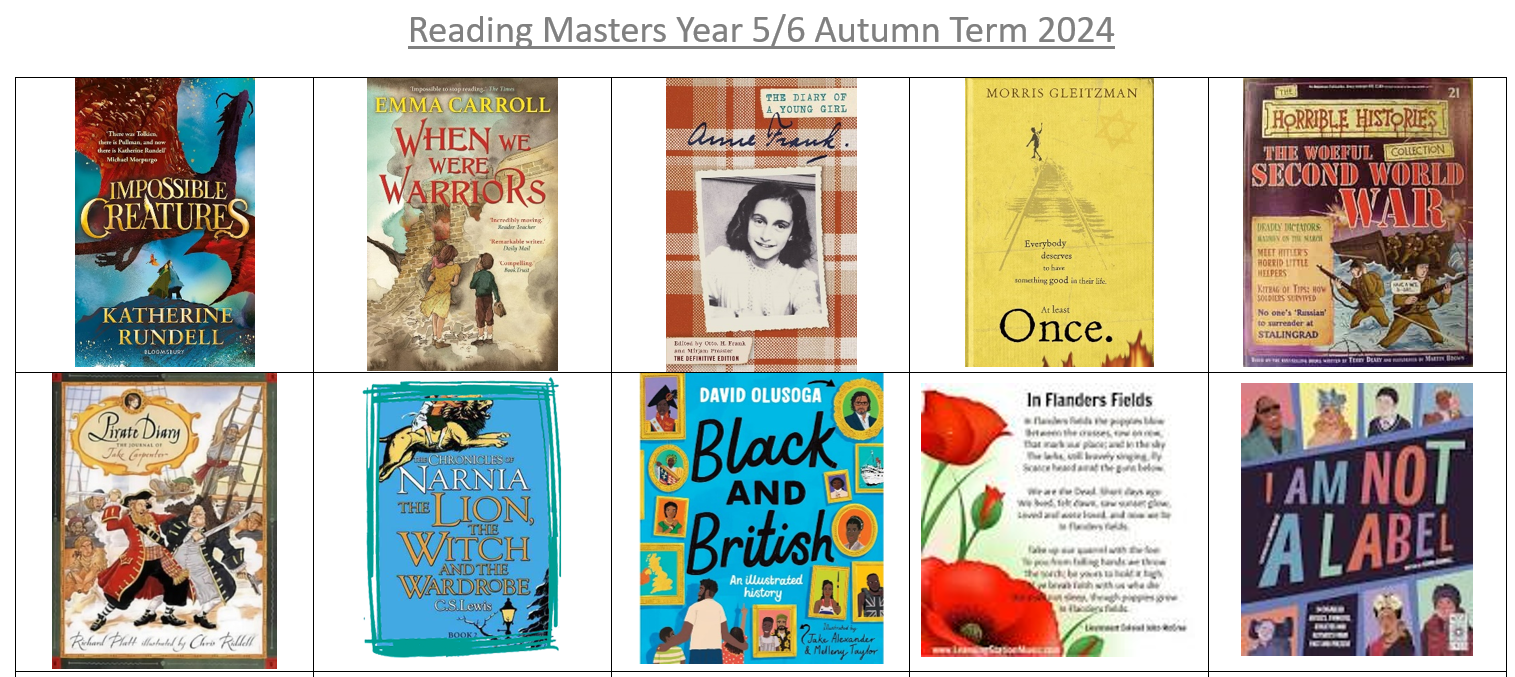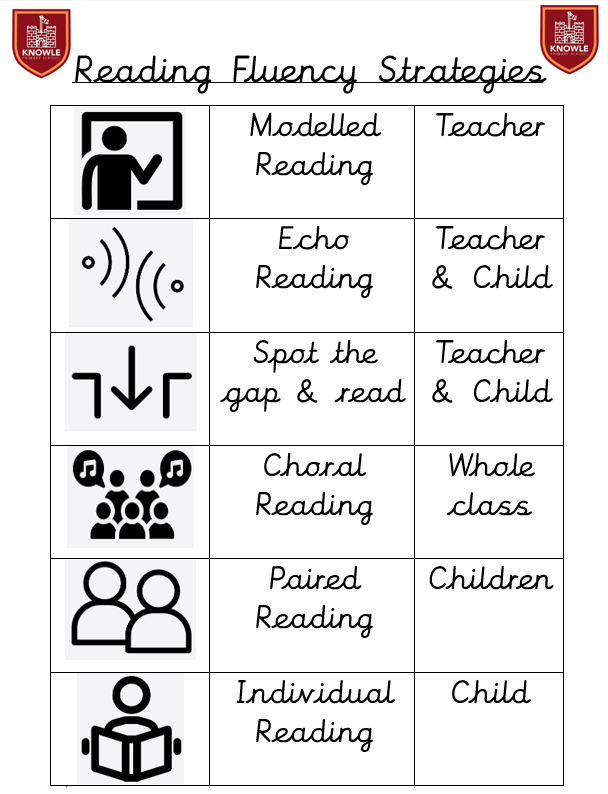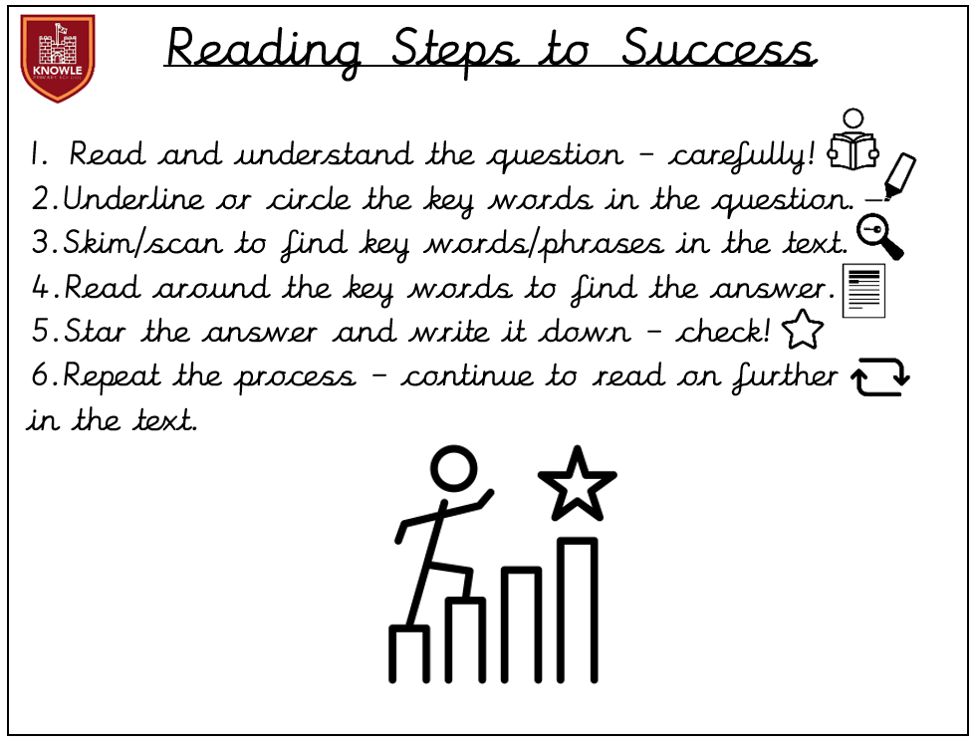Reading at Knowle
The teaching of reading at Knowle begins with understanding the importance of word recognition and language comprehension. This is why there is such an emphasis on the importance of Early Reading and this provides a solid foundation for all other reading interactions and experiences throughout our pupils' school lives. As a school we are focused on ensuring that all pupils leave our school fluent in reading and have the ability to comprehend what they read across the curriculum.
We understand that there are multiple cognitive processes required to read successfully. This is why the teaching of reading in our school focuses on the two main elements of word reading and language comprehension. In EYFS and KS1, the focus is on word reading, and the comprehension elements are then strengthened and developed across KS2, along with a strong basis of vocabulary and language development. As demonstrated through 'The Reading House', evidence-backed research from the EEF:
Another demonstration of this language acquisition is from the 'Scarborough Reading Rope' model.
Scarborough’s rope asserts that both language comprehension and word recognition are necessary for skilled reading or for “fluent execution and coordination of word recognition and text comprehension” (Scarborough, 2001, figure 8.1 p. 98).
She describes the importance of automatic word recognition skills (phonological awareness, decoding, and sight recognition of words) to ensure that the reader exerts minimal effort to decode text, saving important cognitive energy for comprehension.
She also delineates that simply focusing on word recognition does not present a complete picture of all the language skills needed for reading and that language comprehension is equally important in reading development. She explains that children must also have background and vocabulary knowledge, verbal reasoning, literacy knowledge, and an understanding of language structure to comprehend what they read.
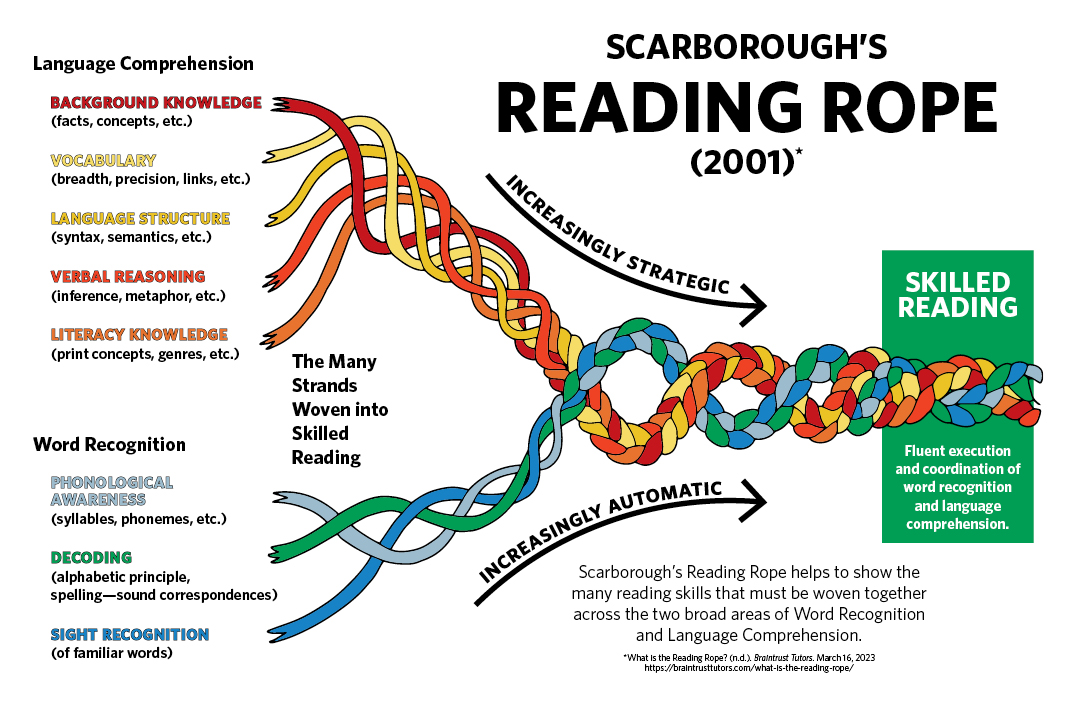
Reading Masters - How we teach comprehension skills to children:
At Knowle, pupils are taught the Reading objectives from the National Curriculum. We know that to be an accomplished reader, pupils must comprehend what they read and their fluency levels will affect their comprehension. In EYFS and KS1, there is a focus on phonics and applying this to their early reading. Pupils will develop their fluency in reading as part of the phonics programme. When pupils complete the phonics programme, they develop their reading skills by reading texts that are age appropriate and cover a range of text types. Teachers use model, echo and choral reading to explicitly teach fluent reading. Alongside this, reading skills are explicitly taught. To support pupils in remembering the reading skills, the acronym VIPERS is used. VIPERS stands for Vocabulary, Inference, Predictions, Explaining, Retrieval, Sequencing (KS1)/ Summarising (KS2). Pupils will be taught the objectives from the National Curriculum but to enhance their acquisition of these, the VIPERS reading skills will be used.
During our Reading Masters lessons - which is what we call our Whole Class Reading (WCR) - children are exposed and introduced to a wide range of high-quality, inspiring texts chosen by staff. These are planned across the term to link with and support curriculum topics, but also promote diversity as part of a literary diet.
Here is an example of our Reading Masters spine from the Autumn term:
We use dual-coding across our reading lessons to encourage the retention of knowledge and to allow every child to achieve the same learning outcomes. These are really helpful when teaching and demonstrating our range of fluency strategies that help to support oracy in our lessons and promote control of tone and volume (prosody) in our sessions.
We have found that using our Steps to Success allows all children to be successful when reading and comprehending the text:
Children are taught through the 'I Do, We Do, You Do' process to support the teaching of modelled, guided and deliberate practise. The teacher will select and model key vocabulary that is necessary to understand the text - these tend to be tier 2 or tier 3 words. Dual coding is used to support information on slides in lessons.
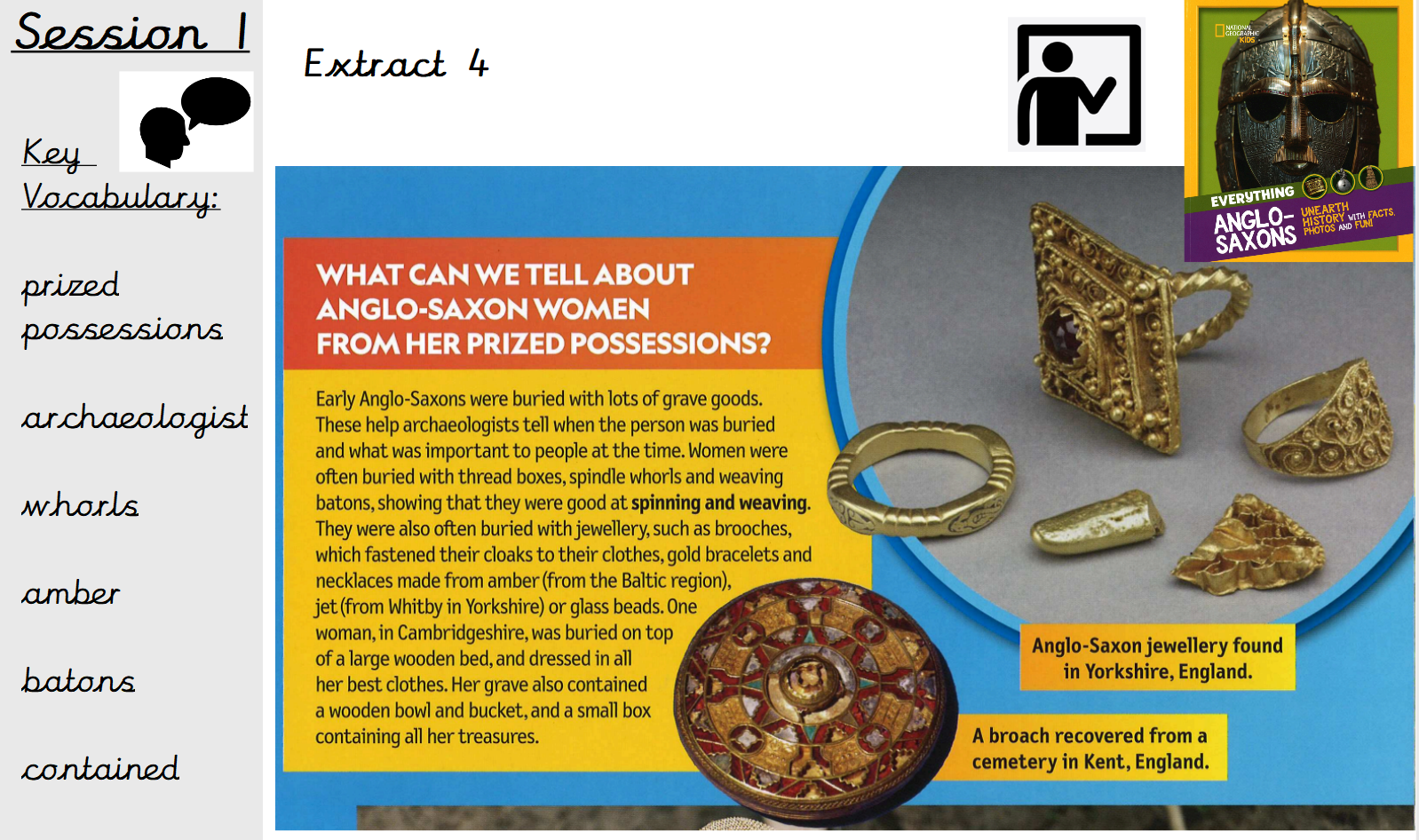
Teachers model different questions focusing on the different reading skills that children need to learn:
